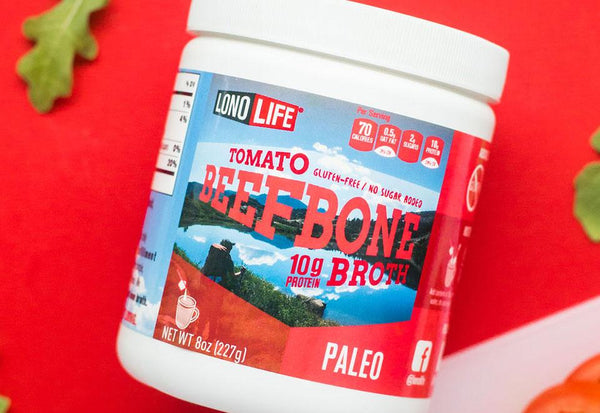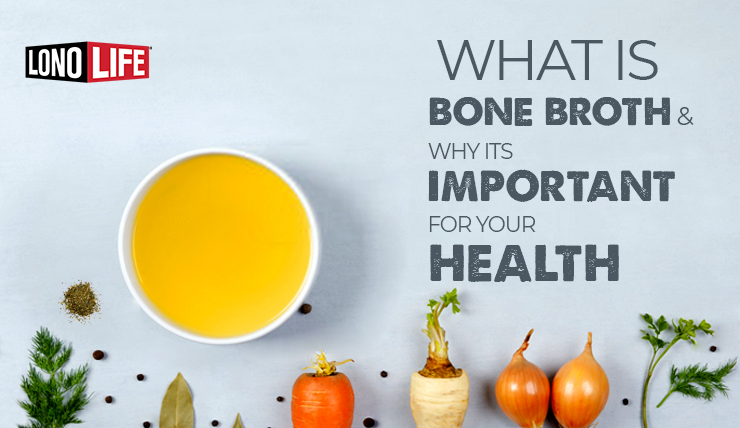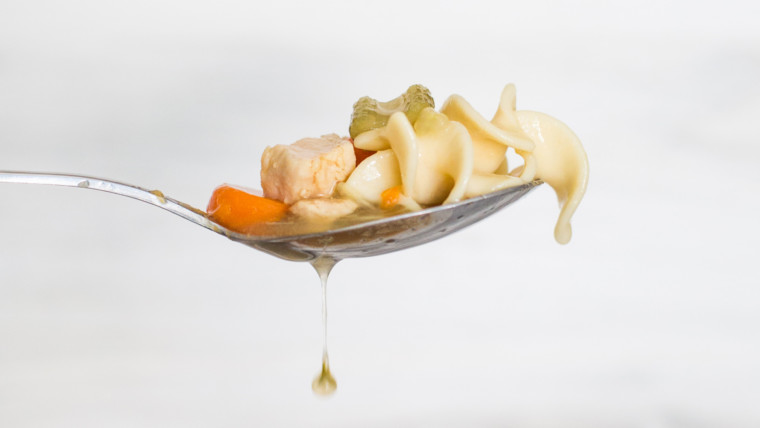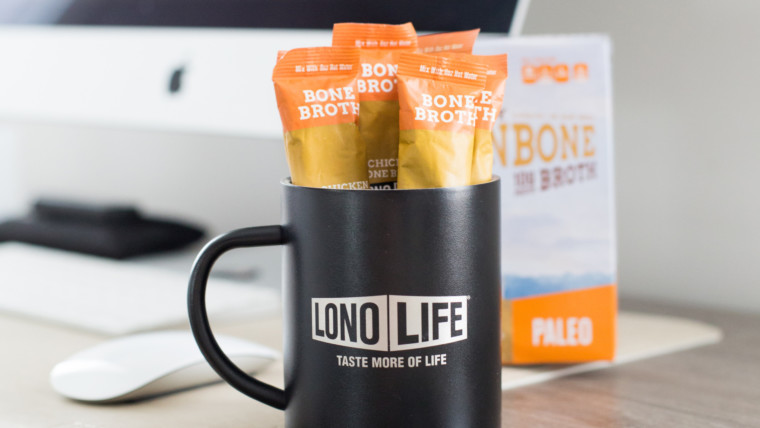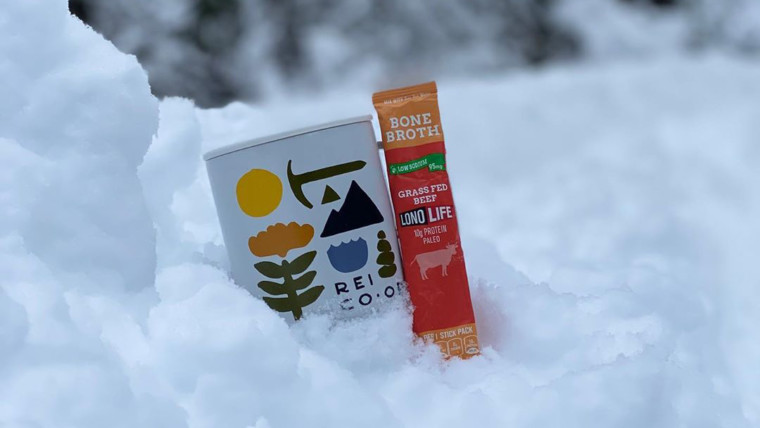Take a look at the nutrition label on our single-serve bone broth stick packs and K-Cups. Bet you think our bone broth is rich in calcium, huh? But take a look at what it says under protein. “Not a significant source of calcium.” This means there’s less than 2% of your recommended daily value of calcium in a serving of bone broth.

But how can that be? Shouldn’t bone broth be rich in calcium? After all, we soak the bones for at least 24 hours; doesn’t the calcium from the bones leach out into the simmering, scalding hot broth? It seems logical, considering that bones are about 40% calcium. So wouldn’t boiling them render a high amount of calcium?
Evidently, not. And in our defense, we’re not the only bone broth that’s super low in calcium. Other true bone broths (not commercial glorified soup stock trying to con the public into thinking it’s bone broth) have had their calcium and other minerals lab-tested, all of them revealing low calcium. Many traditional food bloggers are shocked when hearing about bone broth’s low calcium levels.
In light of this, considering that 1 out of every 4 women age 65 and older will have osteoporosis, which means that at least 50% of a person’s original bone mass has deteriorated, should you no longer sip, savor and slurp bone broth? Instead, should you drink more milk and eat more cheese?
Of course not. And we’re not just saying that because we’d be out of business if everyone ditched bone broth for dairy and other foods high in calcium. But before we sell you on why our bone broth is indeed excellent for joint and bone health, let’s examine a nutritional paradox about calcium and bone health.
Brittle Bones: Lack of Calcium Surely Isn’t The Problem
Osteoporosis is often regarded as a bone disease caused by insufficient calcium. But it’s not calcium in the diet that’s missing. If that were the case then the countries with the highest dairy consumption per capita in the world–the U.S.; U.K.; Finland; Sweden, and other first-world dairy-loving countries–wouldn’t be the same ones with the highest rates of osteoporosis.
That’s right. The countries with the highest calcium consumption are also the same ones with the most porous bones. Nonetheless, we are told by public health officials to keep increasing our calcium consumption. In fact, an article on Slate.com says the National Academy of Sciences recently raised its recommended daily allowance of calcium by 50%!
So why is it that countries that consume far less calcium than the typical American or Brit have far less rates of osteoporosis and hip fractures? Where’s the disconnect?
One hypothesis for the high calcium-osteoporosis link is eating too much animal protein leaches calcium from the bones. Many Americans do indeed consume too much meat and far too few veggies, including calcium-rich green-leafy veggies. Green-leafy veggies do not appear to leach calcium from the bones like excess animal protein does.
But there’s another problem that barely receives a blip of media coverage that might explain the reason why countries with calcium-rich diets often have high hip fracture and osteoporosis rates….
Silica: A Missing Micronutrient
The average American diet is woefully deficient in trace minerals. You don’t need a large daily serving of trace minerals, hence the word ‘trace,’ however daily consumption in micro doses of these minerals is critical to health, including bone health.
Calcium is not the only mineral critical for your bones. There are other trace minerals that are just as important. One of them is silica. Weak bones often occur because of a lack of trace minerals, such as silica. Silica prevents collagen breakdown. If you’re a fan of our bone broth, by now, you know our broths help your body regenerate its own collagen, which is the most abundant protein in the human body. Unfortunately, your collagen degenerates to the tune of 1-2 percent every year from approximately age 35 or so.
According to SaveOurBone.com, “Silica has the unique ability to make the most of available calcium, almost amplifying its effects in building bone.” Furthermore, silica accelerates the process of calcification and deposition in bone.
Research also shows silica improves bone matrix quality. It even facilitates bone mineralization. Therefore, fracture healing rates increase in the presence of silica. And it does so even if calcium levels are low.
The good news is LonoLife bone broths contain silica. Again, you don’t need mega amounts of trace minerals in order to derive the benefits. In fact, the trace minerals in bone broth, like silica, help your body regulate instead of waste your calcium.
In other words, bone broth’s ability to protect our bones and joints isn’t because of calcium, but rather because of other underdog-unsung hero nutrients.
Promising Research on Collagen and Osteoporosis
Bone broth is rich in collagen. But you might not always crave a hot cup of bone broth, especially on a very hot day. There are other ways you can get collagen protein. We have Protein Coffee and Grass Fed Collagen Peptides, aka collagen hydrolysate, aka collagen powder. There’s promising research on collagen hydrolysate. A 2000 meta analysis concluded that it’s of interest as a “therapeutic agent of potential utility in the treatment of osteoarthritis and osteoporosis. Its high level of safety makes it attractive as an agent for long-term use in these chronic disorders.”
(Learn more about Protein Coffee here and Collagen Peptide powder here
Bone Broth, Calcium and Bone Health: Conclusion
It’s all about balance. A little dairy and meat every day is fine. Just make sure you’re eating a diet rich in plant-based foods. For lunch and dinner, try to have about three-quarters of your plate filled with veggies. Avoid inflammation by never cooking with vegetable oil. And get your daily dose of collagen by sipping our award-winning Protein Coffee or making a smoothie with our Grass Fed Collagen Peptides, or enjoying a nice warm cup of our bone broth. And take comfort not only in the soothing broth, but the knowledge that the bone broth, not milk, is “doing your body good.”

















